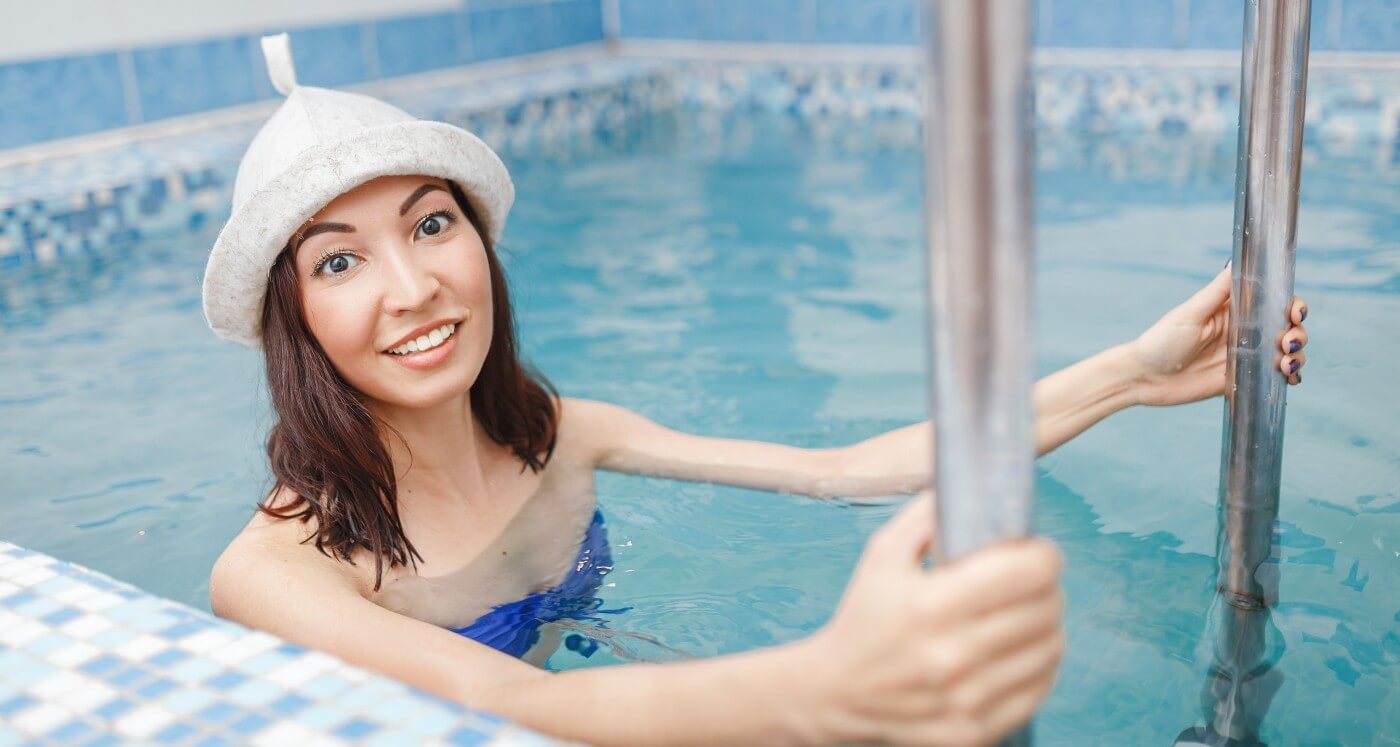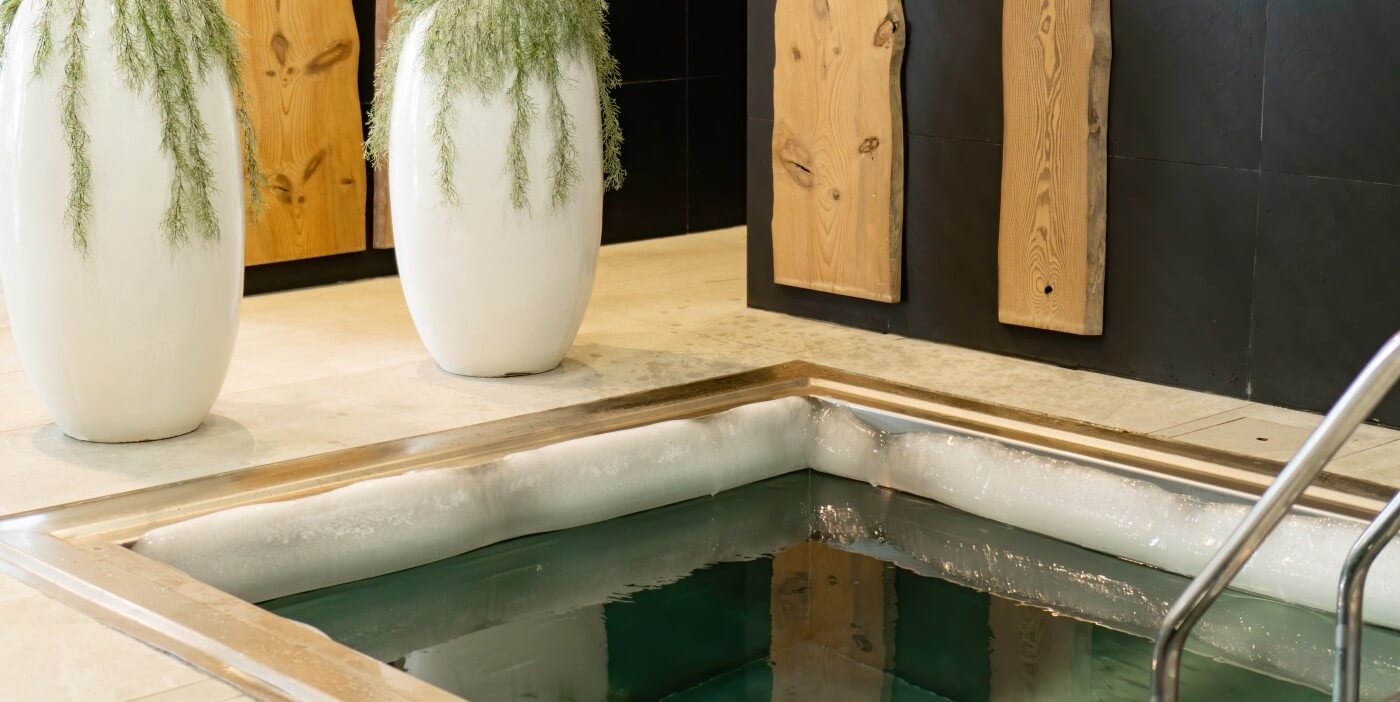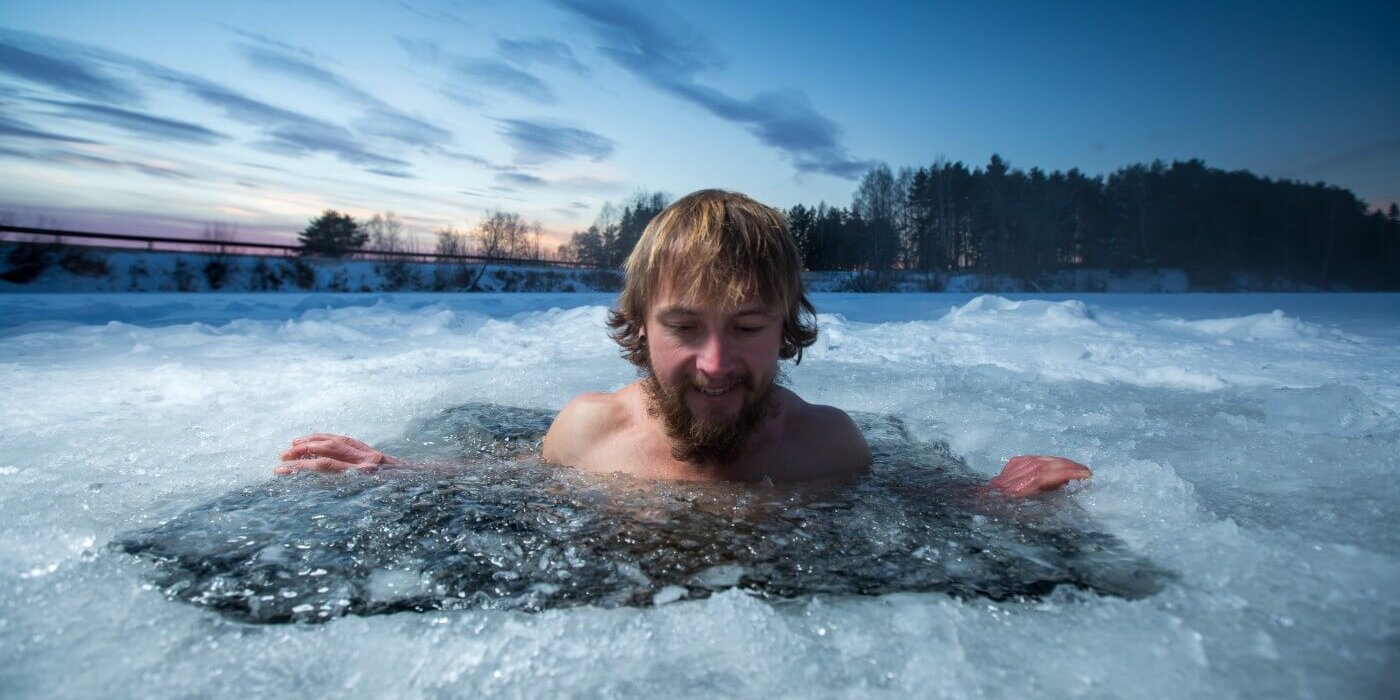If you’re looking for a swimming pool in Low Country, South Carolina, you’re probably exploring all your options.
Traditionally, that meant considering things like in ground versus above ground pools or precast concrete versus fiberglass pools. However, there’s something newer and, well, fresher (in every possible way) to consider too. It’s cold plunge pools, and it’s one of the trendiest things in the pool world.
Let’s take a closer look at what cold plunge is, what cold plunge pools are, the benefits of cold plunge, and more. Here’s what you need to know.
What Is a Cold Plunge?
The phrase “cold plunge” might not be completely new to everyone. We’ve all seen people in Nordic countries leaping into snowbanks after a sauna or Canadians leaping into the ocean for a Polar plunge on New Year’s Day. However, for most people in places like the Low Country of South Carolina, the thought of voluntarily leaping into frigid water has probably never come up until now.
First, let’s start by describing the term “cold plunge.”
A cold plunge is the name for any type of swimming that takes place in cold water. This could mean going for a swim in a glacial lake, lounging in an ice bath, or swimming in a very cold pool. Usually, a cold plunge doesn’t last very long – at least, not long enough to be dangerous, even though the water is very cold. Most cold plunges are about five to ten minutes, usually determined by the water temperature and the plunger’s ability to withstand the cold!
Cold plunge water is usually around 55 to 69 degrees Fahrenheit (about 12 to 20 degrees Celsius) which is not exactly freezing. However, it’s cold enough that you will feel noticeably chilly! Still, you want to stay within safe temperature ranges, and there are several studies that indicate that anything colder than that might be dangerous. You can read more here: Taking the Plunge: Is Cold Exposure Worthwhile? | Cedars-Sinai and Cold Plunging and the Impact on Your Health | University of Utah Health | University of Utah Health
What Are the Benefits of Cold Plunge?
If you’re reading this and wondering why on earth people would willingly immerse themselves in cold water, you’re not alone. Choosing cold water seems strange in a world where most of us dream of heated pools.
However, everyone from wellness experts to sports scientists have started singing the praises of taking a cold plunge. In fact, there are even studies that show a link between taking a cold plunge for faster recovery from intense exercise.
Many of the benefits of cold plunges are linked to reducing inflammation, which cold plunges do by causing blood vessels to constrict, slowing blood flow to the extremities, and naturally reducing inflammation in those parts of the body.
There’s also some evidence that willingly exposing our bodies to physical stress, triggering our fight or flight reflexes, and releasing stress hormones, that we might be able to improve how we cope with stress in everyday life.
Many wellness and health experts will cite other health benefits of cold plunges, but there’s still a lot of research to be done, so we’re not going to weigh in on that. We will say that it’s always a good idea to speak to your doctor before you try any new health, wellness, or fitness ideas. Sudden stress could also trigger all kinds of issues, including undiagnosed heart conditions, so always proceed with an abundance of caution and ALWAYS seek your Doctors approval!
If your doctor gives you all clear, however, you can proceed knowing that there is scientific evidence that cold plunges do have some very real health benefits.

What Are the Potential Risks of a Cold Plunge?
While the benefits of Cold Plunge therapy are numerous and used throughout Collegiate and Professional sports for increased blood flow and faster recovery time from muscle and joint injuries. Many people in the Low Country of South Carolina lead active lives, and sports injuries are not uncommon. Wouldn’t a personal cold plunge pool be the perfect solution when those injuries happen?
However, everything in life – even things that are generally good for you – also come with some inherent risks.
Let’s look at some of the potential risks so you know what they are and can make an informed personal health decision.
Talk to your Physician
Discuss with your Doctor that you are thinking of investing in a Cold Plunge Pool, and make sure you are physically fit enough to use one safely. Ask for directions on how to use one; simply jumping into a 59-degree pool in the heat of the Summer in The Low Country of South Carolina can put your circulatory system into shock. People with heart problems would be more at risk.
Acclimate yourself to the temperature slowly
Slowly drop the water temperature over time to acclimatize your body to colder water temperatures while slowly increasing your time in the colder water. The Low Country of South Carolina is not known for cold water as used in a Cold Plunge Pool. Your body needs time to adjust to avoid something known as “Cold Shock” See article (Cold Shock | cold water safety). Just like a runner training for a marathon, slowly increase your exposure to the Cold Plunge Pool. Learn how to acclimate yourself (Acclimation to Cold Water | cold water safety)
Keep your eye on the Water Temperature
A Cold Plunge Pool can have a broad temperature range, between 55 to 69 degrees Fahrenheit. Letting the Cold Plunge Pool fall below can lead to serious health problems. Read this article for more information on Water Temperature Safety. (Water Temperature Safety Guide | cold water safety)
How to Enter a Cold Plunge Pool
Slow and steady is key; never jump or dive into your Cold Plunge. At the same time, it might be tempting to get it over with and just jump into your Low Country Cold Plunge Pool, which can lead to “Cold Shock,” which is very dangerous. The body’s natural reaction to jumping into a Cold Plunge is to hyperventilate, taking deep sucking breaths of air. If your head is underwater, when that happens, you are sucking in water where it is not supposed to go.
Never use your Cold Plunge Alone
This might seem like a no-brainer to everyone in the Low Country of South Carolina, but taking the dangers of cold water seriously is key to enjoying your Cold Plunge Pool. A trained and responsible SCUBA diver would never dive alone; having a back-up to help in case of emergency is a must. Cold Plunge Pools used in Physical Therapy are always supervised by staff trained to look out for warning signs. When you decide to invest in your own personal Cold Plunge Pool, use the buddy system to look out for each other.
Pay attention to what your body is telling you
Even in the heat of The Low Country of South Carolina, using a Cold Plunge Pool has some possible serious risks. Recognizing and reacting to the symptoms before they pose a threat can lead to an enjoyable and beneficial experience using your Cold Plunge Pool. If you notice shortness of breath, pain in your chest or dizziness, or discoloring of your fingers and toes, get out. While it will be normal to experience rapid breathing or deep breaths at first, it should calm down after you acclimate to the water.
Get Warm
This might seem easy to do, especially in The Low Country, where temperatures soar well into the high 90s on your average summer day. But warming up after your Cold Plunge is part of the therapeutic process of a Cold Plunge. Get out, drink a hot liquid, or wrap yourself in a plush robe and let your body temperature slowly return to normal.”
Back to the original question at the start of this section, “Wouldn’t a personal Cold Plunge Pool be the perfect solution?” The answer to that is it can be if you follow some simple rules and educate yourself on how to use your Cold Plunge in The Low Country of South Carolina. Safety First!

What Is a Cold Plunge Pool?
If you live in the Low Country of South Carolina, you’re probably a long way from the nearest glacial lake, and most of the pools nearby are probably relatively warm.
It’s not easy to find very cold water in most parts of North America these days because most people like heated pools and hot tubs.
One solution to this is cold plunge tubs, which can be anything from an old, decommissioned freezer that you use as an icy bath when necessary or even an old bathtub in a scenic location, where you can add ice and water as needed.
There are also commercially available cold plunge tubs, though, which are close to hot tubs in size and appearance, but instead of jets of hot water, they offer users an icy dip in cool, clear water.
Even so-called “combination pools” can switch between heated water like a traditional hot tub and cold water to act as cold plunge tubs. This expands the usefulness of the pool and makes it more useful for everyone in the family!
How to Build a Cold Plunge Pool?
It’s a little easier said than done when it comes to keeping water very cold in the Low Country of South Carolina. This is why we usually recommend that anyone who wants to add this feature to their swimming experience adds a cold plunge tub to a larger swimming pool project, whether that is an above ground pool, shipping container pool, traditional in-ground pool, or small pool project.
There are many ways to build cold plunge pools as part of your pool project, including fiberglass, precast concrete, steel, etc.
If you plan to have different areas of your pool with different water temperatures, like a hot tub and a cold plunge pool, it’s important to discuss this with your pool company. Heat and cold cause expansion and contraction; different materials and designs will be better suited to handle those.
Like other types of pools, your cold plunge pool will need to have a filtration system and a cleaning system, and if you plan to have a permanent cold plunge tub integrated into your swimming pool design, you should also invest in a cover of some kind. This accomplishes two things; it helps lower the costs of cooling your Cold Plunge Pool and helps keep out unwanted debris. The last thing you want to do is to fish leaves and debris out every time you want to use your tub!
How Much Does a Cold Plunge Tub Cost?
One of the main questions everyone has when designing any pool – whether it’s hot, cold, large, or small, or in or above ground is what the cost will be.
The answer is that there is no definitive answer until you have started the design process.
A cold plunge tub could be as simple as a trough that you fill with a hose and add ice, or it could be a complex stainless-steel design with custom lighting and other features.
Most cold plunge tubs and cold plunge pools are a lot smaller than a traditional swimming pool though, and in the swimming pool world, size and price are very closely linked. So, whether you’re planning to add a stand-alone cold plunge pool to your backyard space or adding one to a larger existing pool, they will generally be cheaper than a swimming pool.
As a general rule, there are far too many designs and other options to provide a definitive estimate in an article like this, but a cold plunge tub could cost anything from a couple of hundred dollars to many thousands.
The most important factor to consider when you’re thinking of investing in a cold plunge pool is how often you’re likely to use it.
If you only plan to try this out once or twice, then it might not be worth getting a professionally built cold plunge pool. However, if you’re a dedicated sports person who wants the health and after-work out benefits of cold water regularly, investing in a professional option is much more reasonable.
At The Little Pool Co, our advice for any specialized pools or swimming equipment is always to carefully consider how much use you will get from your investment.
If it’s something you’ll use frequently and get a lot of benefit from, then by all means, add a cold plunge tub to your swimming pool wish list. If you’re not sure, or you’ve never tried a cold plunge for after exercise muscle treatments and therapy, then it might be an idea to try it out in a low-tech tub or refurbished bathtub before you commit to anything.
Whatever you decide, however, and whatever your pool wish list happens to be, the friendly staff at The Little Pool Co in Low Country South Carolina would love to discuss, design and develop them into the dream space you’ve always wanted. So, call or email, and let’s start turning those ideas into reality.







